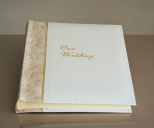kokoshka makeup
Here's a Top Wedding Tip from kokoshka makeup
"Have a makeup trial. If you planning any eye lash extensions, fake tan etc - have a test run. Avoid any facial treatments before the wedding eyebrow waxing - 1 week before, facials - 3 weeks before." - kokoshka makeup - From natural, delicate, glowy bri
























































































































































































